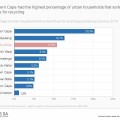
Only 10% of waste recycled in South Africa
Did you know that 90% of an estimated 59 million tonnes of general waste produced in South Africa in 2011 ended up in landfills, while only 10% was recycled?1 The rapid growth in solid waste and the fact that there is a shortage of suitable land to dispose of waste means that South Africa is read more »
GDP in the second quarter of 2018 contracted by 0,7%
Press statement Embargo: Tuesday 4 September 2018, 11:30 GDP in the second quarter of 2018 contracted by 0,7% Gross domestic product (measured by production) South Africa’s gross domestic product (GDP) fell by 0,7% in the second quarter of 2018.1 The agriculture, read more »
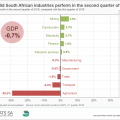
The economy shrinks by 0,7% in Q2: 2018
The South African economy slipped into recession during the second quarter of 2018, shrinking by 0,7% quarter-on-quarter (seasonally adjusted and annualised). This followed a revised 2,6% contraction in the first quarter of 2018. The widely recognised indicator of recession is two (or more) consecutive quarters of negative growth (real GDP quarter-on-quarter). South Africa experienced its read more »
Stats Biz – August 2018
Stats Biz – August 2018 Eskom and Transnet were the two biggest public-sector spenders on fixed assets (or capital expenditure) such as plant, machinery, new construction works and transport equipment. Eskom was responsible for 28% of total capital expenditure while Transnet was in second spot at 9%. Explore capital expenditure, and other stories, in this read more »
Statistics South Africa to release Gross domestic product (GDP) Q2 2018
Media advisory 31 August 2018 Statistics South Africa to release Gross domestic product (GDP) Q2 read more »
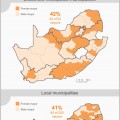
#WomensMonth: Exploring the mayoral glass ceiling
Three of South Africa’s eight metropolitan municipalities were headed by female mayors in 2017. Executive Mayors Zandile Gumede (eThekwini), Olly Mlamleli (Mangaung) and Patricia de Lille (Cape Town) collectively presided over a population of 8,7 million people, comprising 15% of South Africa’s total population.1 It’s not only these high-profile cities that have a woman in read more »
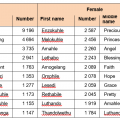
Recorded live births, 2017
MEDIA RELEASE 27 August 2018 Recorded live births, 2017 The Recorded live births, 2017 report released by Statistics South Africa today shows that a total of read more »
What’s in a name?
The most popular name given to babies in 2017 is Enzokuhle. The name, which shares the top spot for both males and females, loosely translates to, “to do good”. According to the Recorded Live Births, 2017 report released by Statistics South Africa (Stats SA), a person’s forename and surname are fundamental human rights enshrined in read more »
Statistician-General to release report on Recorded live births, 2017
MEDIA ADVISORY 23 August 2018 Statistician-General to release report on Recorded live read more »
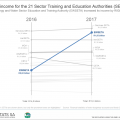
Plugging the skills gap one leak at a time
Recent news reports of sewage spills in the Vaal Dam have again raised concerns over South Africa’s water resources. In order to reduce the costs of maintaining the country’s water network, government has embarked on a programme to train unemployed youth with skills to patch up ageing infrastructure. An important tool to fight joblessness is read more »

